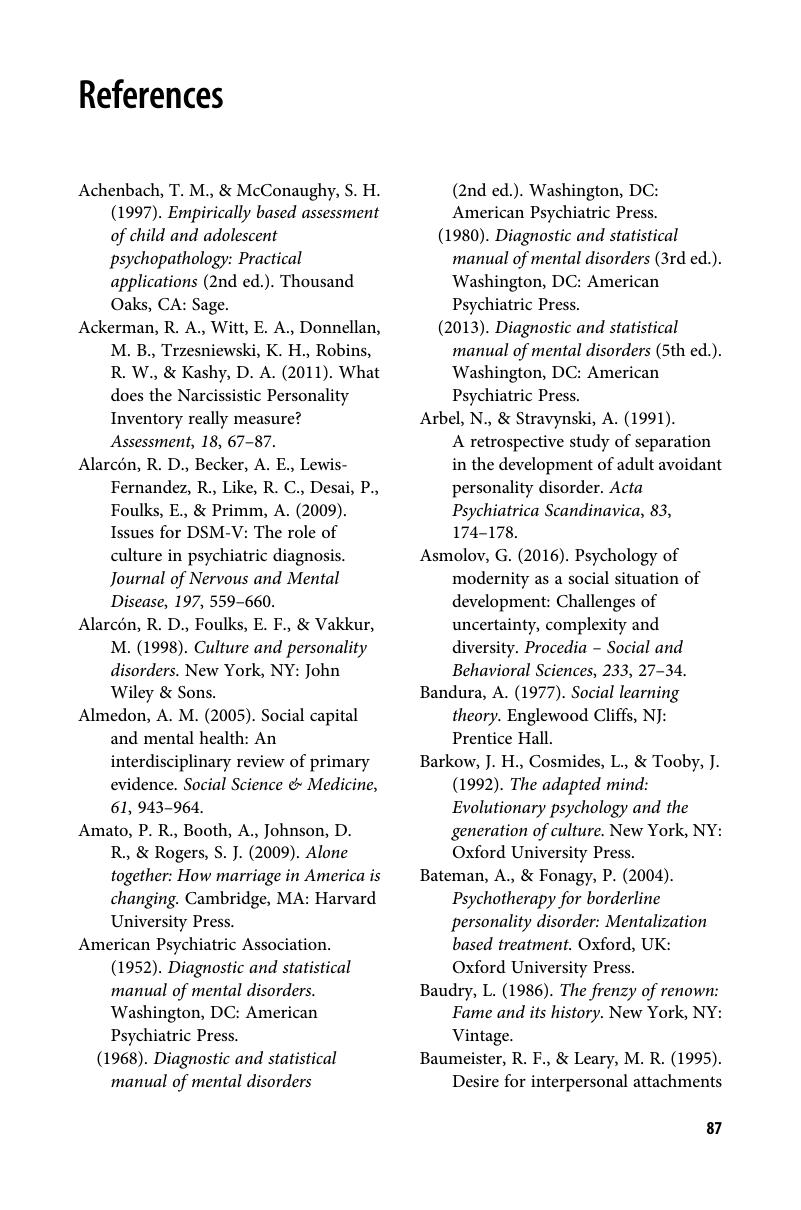Book contents
- Social Factors in the Personality Disorders
- Social Factors in the Personality Disorders
- Copyright page
- Contents
- Foreword
- Preface to the Second Edition
- Introduction
- Part I General Principles
- Part II Social Mechanisms
- Part III Specific Patterns of Disorder
- Part IV Models and Clinical Applications
- References
- Index
- References
References
Published online by Cambridge University Press: 29 August 2020
- Social Factors in the Personality Disorders
- Social Factors in the Personality Disorders
- Copyright page
- Contents
- Foreword
- Preface to the Second Edition
- Introduction
- Part I General Principles
- Part II Social Mechanisms
- Part III Specific Patterns of Disorder
- Part IV Models and Clinical Applications
- References
- Index
- References
Summary

- Type
- Chapter
- Information
- Social Factors in the Personality DisordersFinding a Niche, pp. 87 - 110Publisher: Cambridge University PressPrint publication year: 2020



